Road Trip: Bay of Fundy to Maine
We were thoroughly enjoying our stay on the lower part of Cape Breton Island. I could have stayed longer at our cottage on Bras d’Or Lake, but it was time to explore the Cabot Trail. So we packed up the Prius and hit the road again.
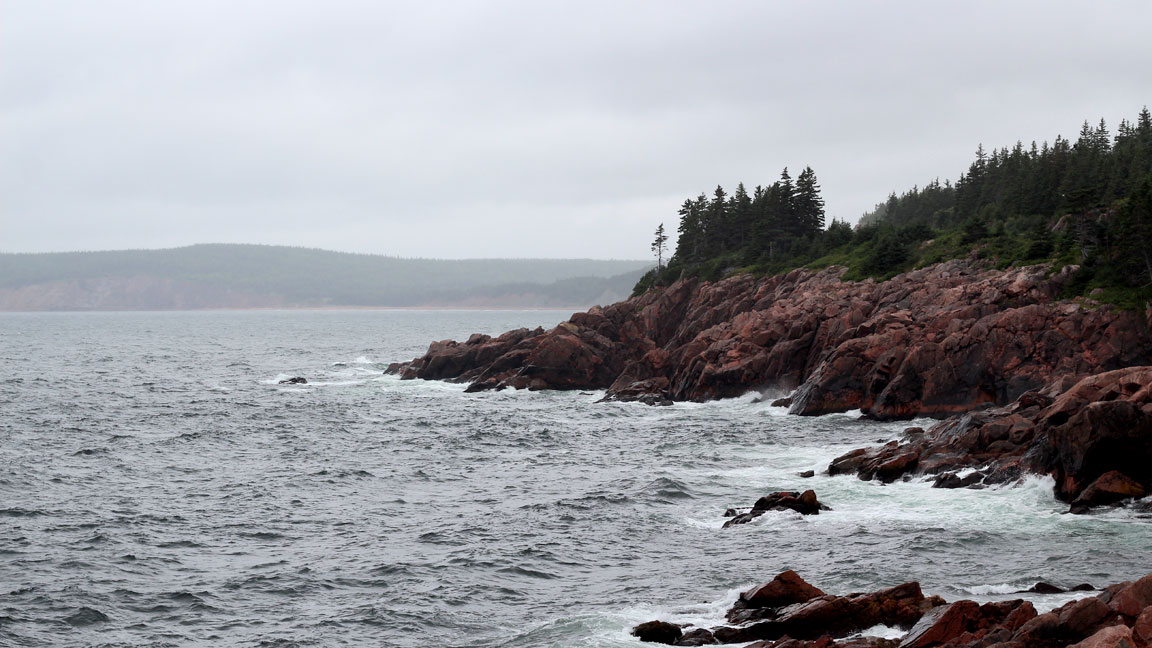 Eastern side of Cabot Trail
Eastern side of Cabot Trail
The Cabot Trail follows the coast around Cape Breton Highlands National Park. We knew we were getting close when we started to see mountains rise up against the Atlantic ocean. It was cold and rainy, but the rocky cliffs against the grey ocean made for epic views.
 View of Cape Breton Highlands from Cabot Trail
View of Cape Breton Highlands from Cabot Trail
Most Nova Scotians we met agreed the Cabot Trail would be our best bet for seeing a moose. In all our trips we had never seen one, and we were determined not to leave Cape Breton Island until we had. As we started to get near our next stay in Cheticamp, we began to think seeing a moose might not be in the cards. But sure enough, as we came around a turn we spotted one chomping down on the brush. We pulled over, and the moose kept grazing, allowing us to snag a few photos.
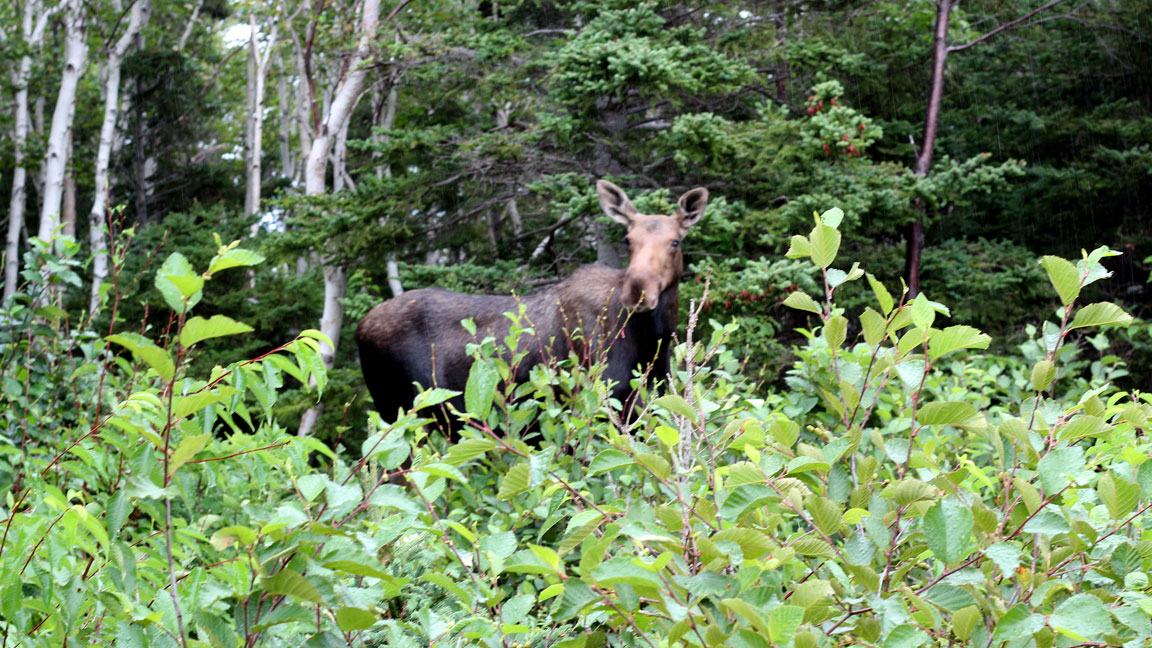 Moose!
Moose!
With our moose goals achieved, we arrived in Cheticamp able to relax for the night. The weather cleared up the next morning, but it was still windy and cold. Cheticamp has a significant French contingent and we were able to warm up with some coffee, tea, and fresh croissants from the local bakery. After enjoying our breakfast on the water, we hit the road again. It was great to have a clear day to take in the rest of the sights as we completed the Cabot Trail and headed for the Annapolis Valley.
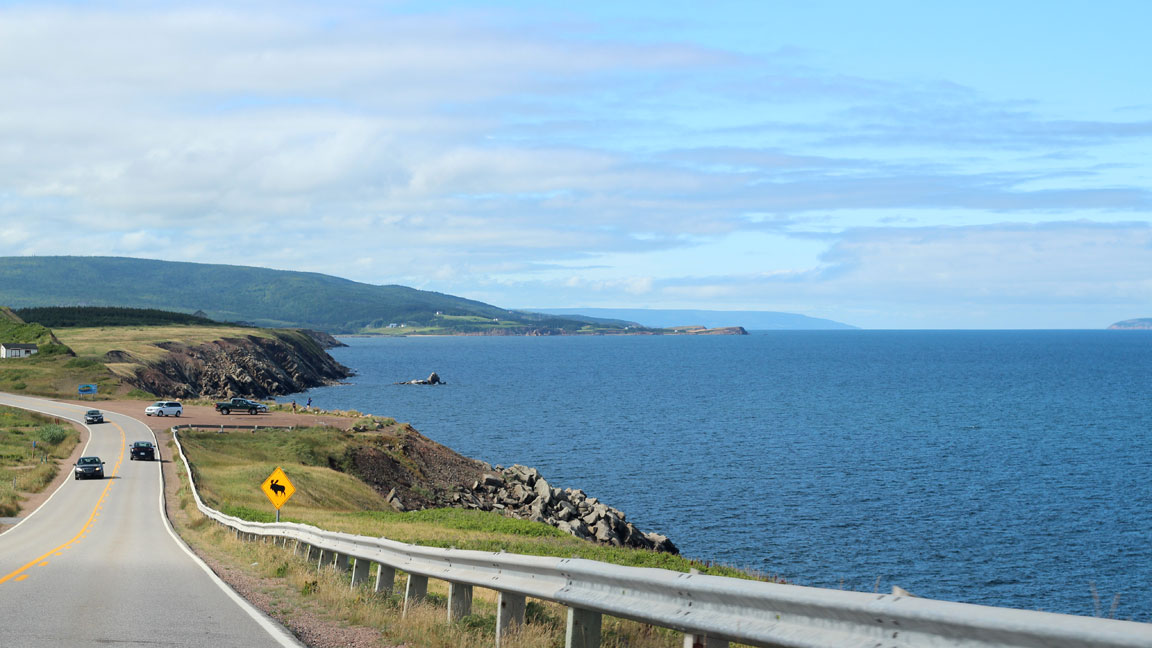 Leaving Cheticamp
Leaving Cheticamp
The season in Nova Scotia seemed to be about a month behind Connecticut, which meant we got to enjoy the wild berry season over again. On Cape Breton Island, we found a lot of wild raspberries, but driving further south into the more temperate Annapolis Valley, we started to see blackberries. Plentiful, plump and sweet, these were a particular treat. We probably looked like a couple of rabid bears thrashing through the bushes to get at the plumpest ones.
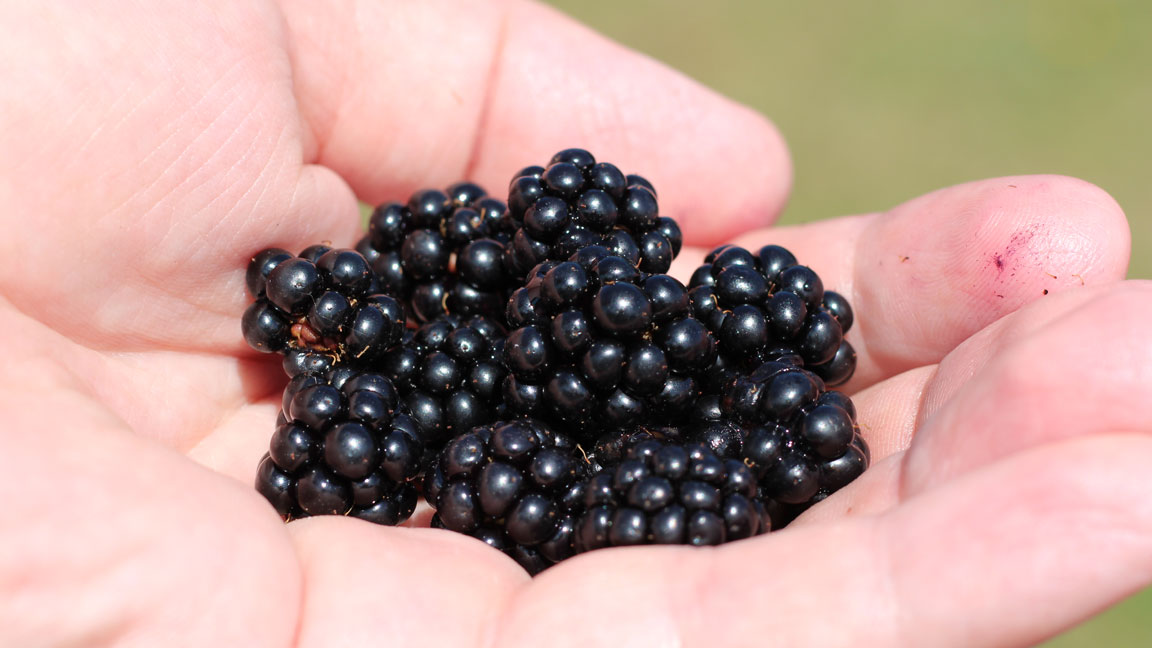
Our next stop in the Annapolis Valley was in the countryside of Avonport. We found a cozy room with a view of Minas Basin for $83/night. The basin is at the tip of the Bay of Fundy and sees a huge tide swing. At low tide, the basin is virtually empty, and when the tide comes in, it fills the inlets all the way into the fields where the cows graze.
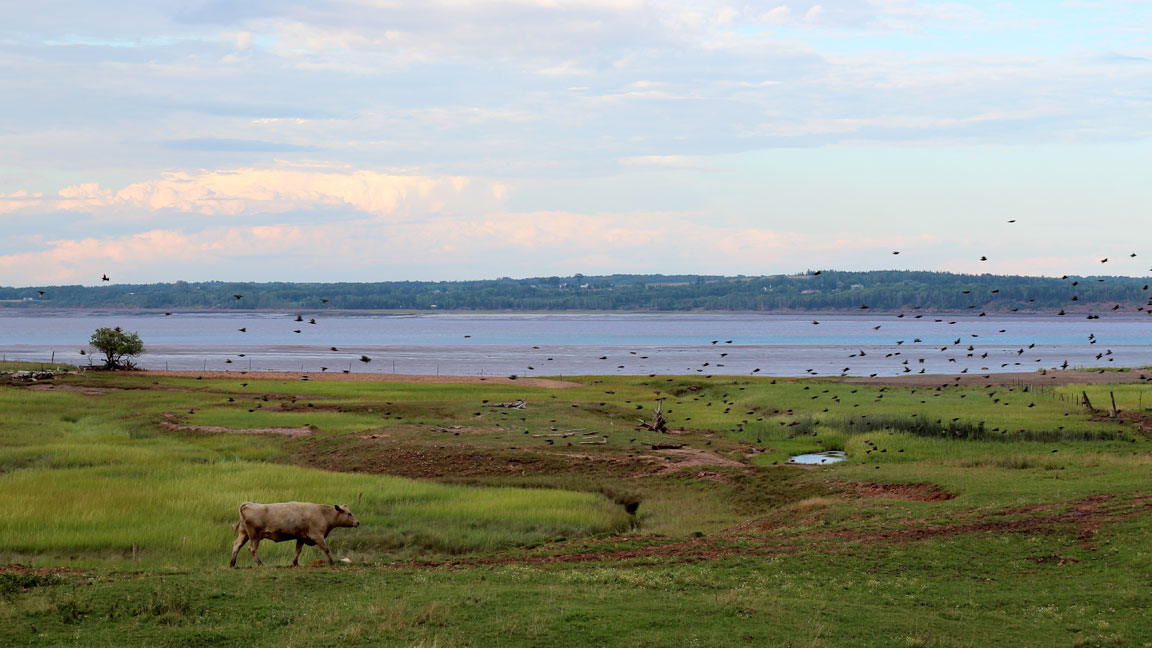 Bay of Fundy. Tide going out at Minas Basin
Bay of Fundy. Tide going out at Minas Basin
We relaxed on our deck watching the sunset and changing water views. There are many working farms in the Annapolis Valley because of the relatively temperate climate and fertile soil. There was a neighboring cow farm, far away enough that we couldn’t smell them, but close enough for us to watch the cows move in an out of the fields with the tides.
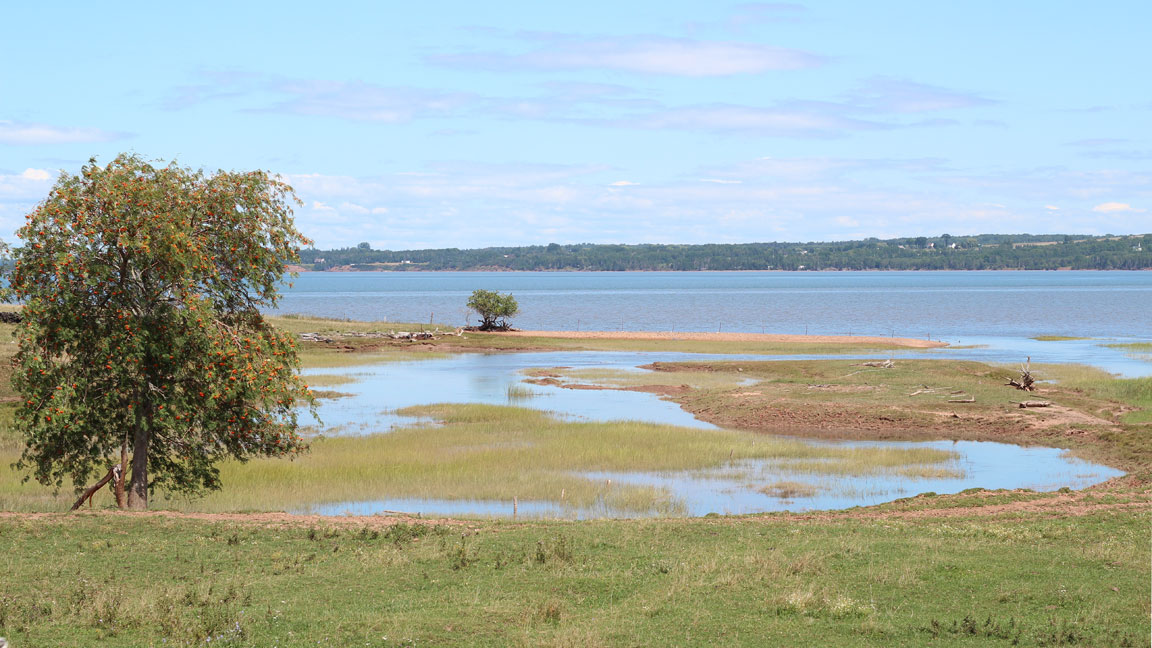 Bay of Fundy. High tide at Minas Basin
Bay of Fundy. High tide at Minas Basin
When we arrived in Avonport, our host asked us if we were planning on doing any fossil hunting. Apparently we were right up the street from Blue Beach which is known for its fossils. It wasn’t something we planned, but of course we couldn’t turn down the opportunity to be dinosaur hunters.
We hit the beach the next morning during low tide. The location looks like some kind of desolate alien planet with the red tide creeping up piles of shale. We were told it’s not uncommon for absent minded visitors to become trapped between the cliffs and the rising tide.
 Fossil hunting on what looks like another planet
Fossil hunting on what looks like another planet
The rocks on Blue Beach are from a period 300-350 million years ago when the first four-legged lizard/fish evolved to creep out of the oceans. Searching near incoming water, I found a rock with a fossil of what looked like scales from a lizard or snake. We took the fossil to a small museum just off the beach, and the very knowledgeable volunteer running the museum informed us that we had a 350 million year old Lepidodendron tree fossil! It was no lizard/fish/man but I was pretty stoked to have a super old tree rock.
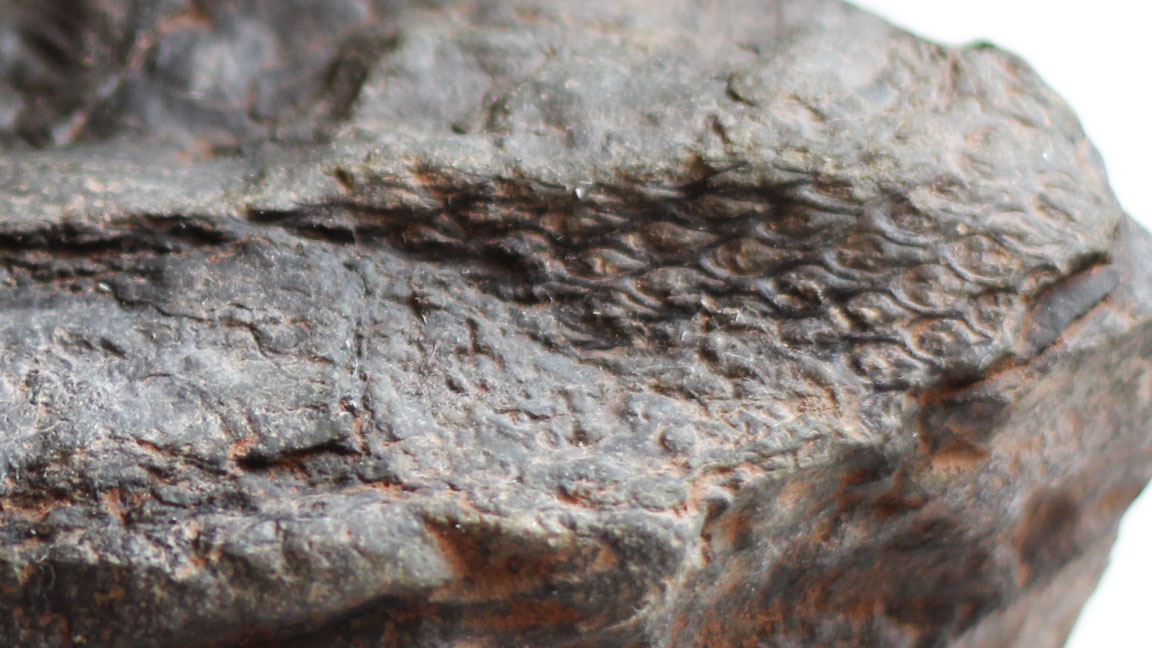 ~350 million year old Lepidodendron tree fossil I found
~350 million year old Lepidodendron tree fossil I found
After our fossil hunting expedition, we also visited Hall’s Harbor, where the boats are tied on steel cables with rings that allow them to rise and sink 50 ft with the massive tide. Just hanging around the docks for an hour we saw the boats fall a good 5 feet.
On our way back, we spotted three bald eagles flying in low circles overhead. This was only the second time I saw a bald eagle in the wild (the first was in Colorado.) And I managed to get a pretty sweet picture.
 We are watching you, Canada
We are watching you, Canada
After enjoying the Bay of Fundy and Annapolis Valley we headed back toward the Canadian border. We found a place on a private lake near St. Stephen for $85/night. We took advantage of our hosts’ canoe and paddled the lake – it was the most serene paddle ever without a soul in sight. At night, we enjoyed the sunsets over the lake with hummingbirds buzzing over our heads. It was a nice break from all the sightseeing and searching for old rock bones.
 Sunset over a private lake in St. Stephen
Sunset over a private lake in St. Stephen
We decided to do one more stop before heading back home. This time, we opted to stay in Belfast, Maine where we found a room in a historical home for $70/night. The host had a nice garden and chickens, so we had lots of important strategies to discuss. He also was an avid fisherman and let us know about a special spot for collecting mussels. We went during low tide, and there were thousands of them tucked between large rocks. We collected a bunch to take home.
 Maine mussels
Maine mussels
When we got home, we cleaned the bounty and cooked them up with white wine, shallots and garlic. These mussels were exceptionally fresh and delicious. I was in for a surprise though, biting into one I nearly cracked my tooth on what turned out to be a small pearl. We pulled half a dozen tiny pearls out of the ones we ate.
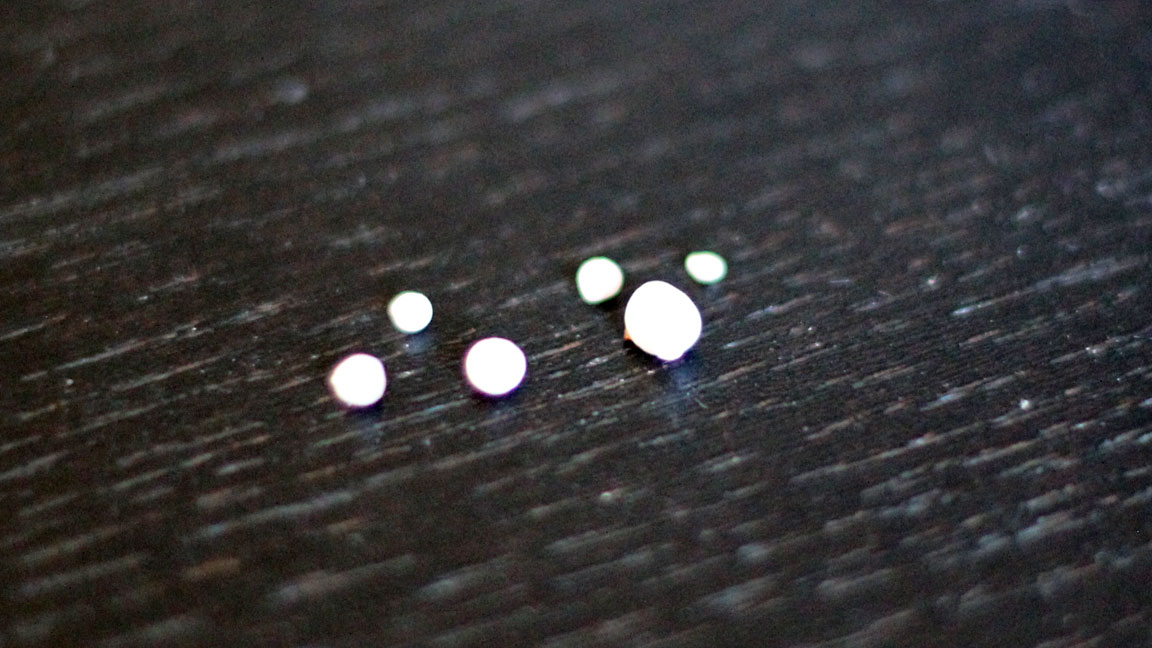 Tiny mussel pearls
Tiny mussel pearls
Aside from nearly cracking a tooth, it was a great meal to celebrate the end of our adventures. We put over 2500 miles on the Prius, met dozens of interesting people, took in pristine scenery, ate some excellent food, stayed in incredible places, and got some sweet souvenirs. Beyond our regular expenses, this road trip cost us less than $100/day for gas, lodging, and restaurants. We learned about a different way of life, what the earth might have been like 350 million years ago, and to be careful when eating wild picked mussels. As with all our travels, we gained new insights that will change the way we live in the future. Our next trip will be to Costa Rica, but for now we are happy to take some time relaxing at home. I think the chickens missed us.